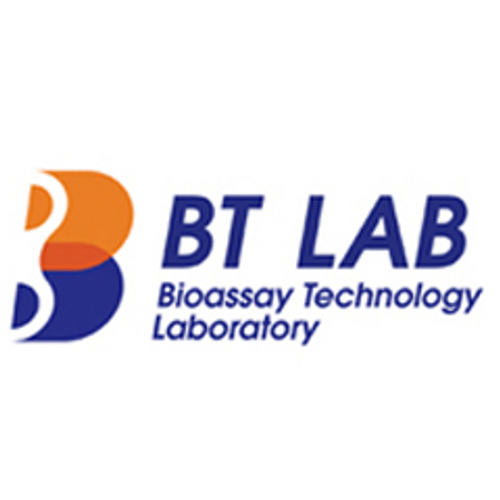Product Description
Mouse Soluble tumor necrosis factor-related apoptosis inducing ligand (sTRAIL) ELISA Kit | AE13987MO | Abebio
Species Reactivity: Mouse (Mus musculus)
Abbreviation: TNFSF10
Alternative Name: APO2L; Apo-2L; CD253; TL2; TRAIL; Apo-2 ligand|TNF-related apoptosis inducing ligand TRAIL|tumor necrosis factor (ligand) family; member 10|tumor necrosis factor apoptosis-inducing ligand splice var
Application: ELISA
Range: 31.25-2000 pg/mL
Sensitivity: 7.81 pg/mL
Intra-Assay: ≤6.1%
Inter-Assay: ≤7.5%
Recovery: 0, 9
Sample Type: Serum, Plasma, Other biological fluids
Detection Method: Sandwich
Analysis Method : Quantitive
Test Principale: This assay employs a two-site sandwich ELISA to quantitate TNFSF10 in samples. An antibody specific for TNFSF10 has been pre-coated onto a microplate. Standards and samples are pipetted into the wells and anyTNFSF10 present is bound by the immobilized antibody. After removing any unbound substances, a biotin-conjugated antibody specific for TNFSF10 is added to the wells. After washing, Streptavidin conjugated Horseradish Peroxidase (HRP) is added to the wells. Following a wash to remove any unbound avidin-enzyme reagent, a substrate solution is added to the wells and color develops in proportion to the amount of TNFSF10 bound in the initial step. The color development is stopped and the intensity of the color is measured.
Product Overview: This protein is a cytokine that belongs to the tumor necrosis factor (TNF) ligand family. This protein preferentially induces apoptosis in transformed and tumor cells, but does not appear to kill normal cells although it is expressed at a significant level in most normal tissues. This protein binds to several members of TNF receptor superfamily including TNFRSF10A/TRAILR1, TNFRSF10B/TRAILR2, TNFRSF10C/TRAILR3, TNFRSF10D/TRAILR4, and possibly also to TNFRSF11B/OPG. The activity of this protein may be modulated by binding to the decoy receptors TNFRSF10C/TRAILR3, TNFRSF10D/TRAILR4, and TNFRSF11B/OPG that cannot induce apoptosis. The binding of this protein to its receptors has been shown to trigger the activation of MAPK8/JNK, caspase 8, and caspase 3.
Stability: The stability of ELISA kit is determined by the loss rate of activity. The loss rate of this kit is less than 5% within the expiration date under appropriate storage condition. The loss rate was determined by accelerated thermal degradation test. Keep the kit at 37°C for 4 and 7 days, and compare O.D.values of the kit kept at 37°C with that of at recommended temperature. (referring from China Biological Products Standard, which was calculated by the Arrhenius equation. For ELISA kit, 4 days storage at 37°C can be considered as 6 months at 2 - 8°C, which means 7 days at 37°C equaling 12 months at 2 - 8°C) .
 Euro
Euro
 USD
USD
 British Pound
British Pound
 NULL
NULL








